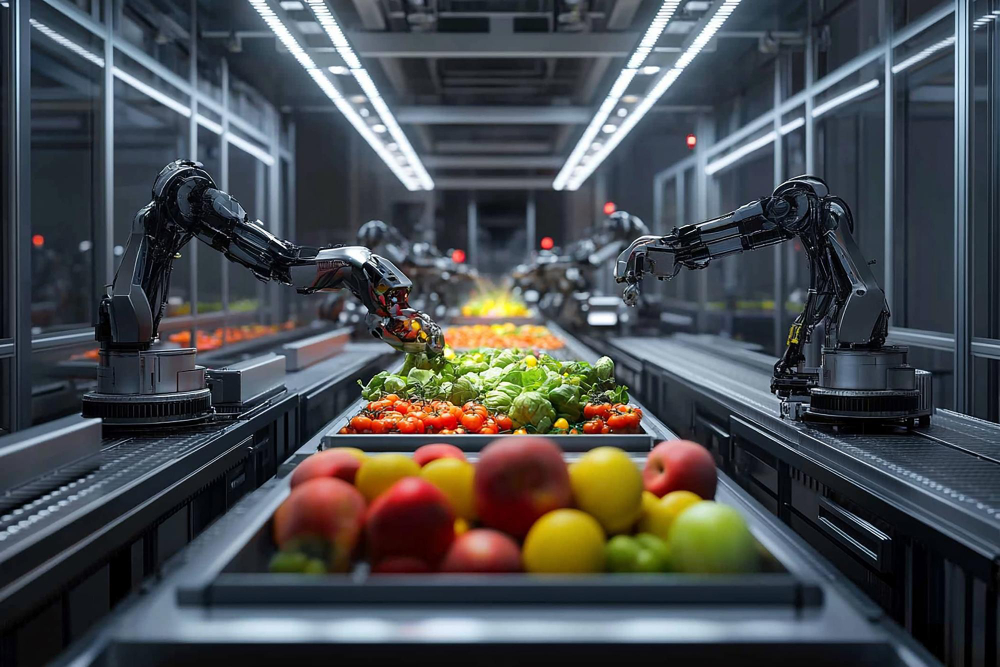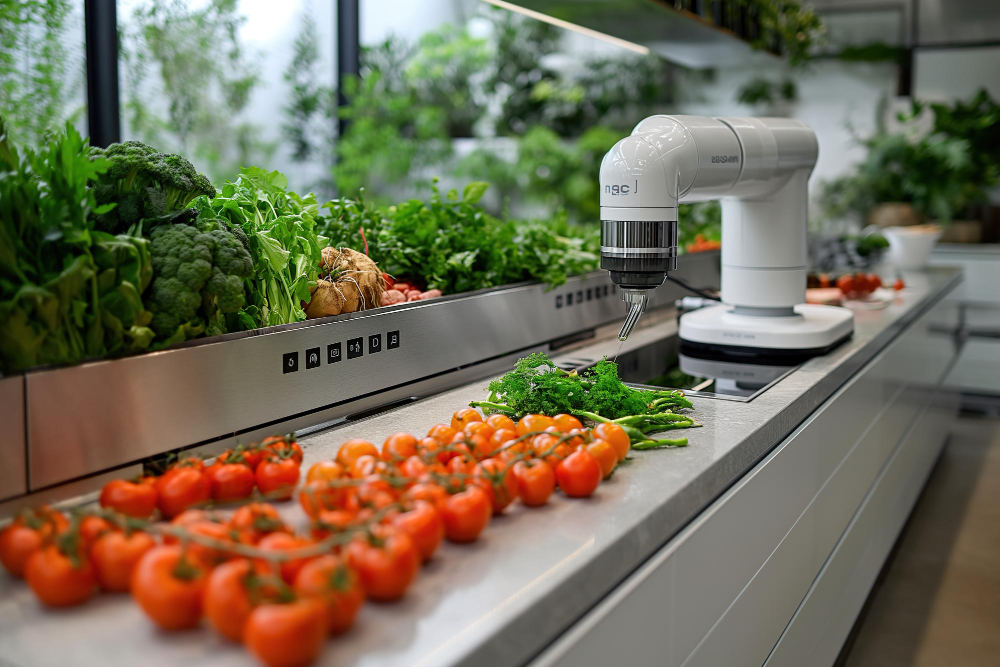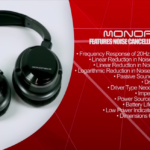Revolutionising food production with machine vision technology
- 1 Understanding Machine Vision Technology
- 2 Key Components of Machine Vision Systems:
- 3 Benefits of Machine Vision in Food Production
- 3.1 1. Consistent Product Quality
- 3.2 2. Increased Productivity & Efficiency
- 3.3 3. Cost Savings
- 3.4 4. Real-Time Data & Analytics
- 4 Ensuring Compliance with Industry Standards
- 5 Improving Performance Through Innovation
- 5.1 Integration with IoT and Predictive Maintenance
- 5.2 Cloud Computing for Flexibility and Scalability
- 6 Applications of Machine Vision in the Food Industry
- 6.1 1. Inspection of Packaged Goods
- 6.2 2. Grading and Sorting Fresh Produce
- 6.3 3. Foreign Object Detection
- 7 Conclusion
In an era where food safety and quality are paramount, ensuring the highest standards in food production has become increasingly vital. Consumers are more aware than ever about the quality of their food, pushing producers to adopt stricter quality control measures. At the same time, technological advancements have provided innovative solutions that can significantly enhance food production processes. Machine vision is one of the most impactful technologies driving these changes, enabling food producers to automate inspection and quality control.
A company in charge of this space is TriVision, a pioneer in machine vision technology with over 20 years of experience supplying solutions tailored to the food industry. In this article, we’ll explore how vision technology transforms food production, ensures compliance with industry regulations, boosts performance, and provides a competitive edge in a market where efficiency and quality are paramount. Read more about food production right here Trivision.io/gb.
Understanding Machine Vision Technology
Machine vision technology uses imaging systems, including cameras and sensors, to inspect and analyze products automatically. Machine vision systems can precisely identify defects, contamination, and compliance issues by leveraging advanced image processing. In food production, every product can be inspected in real-time for anomalies, ensuring only high-quality goods reach the consumer.
Machine vision systems use high-resolution cameras and powerful processors to rapidly capture and analyse images, making them well-suited for high-volume production lines. These systems rely on sophisticated algorithms to detect discolouration, deformation, foreign objects, and labelling errors. Producers can reduce human error and maintain consistent product quality across entire production batches by automating these inspections.
Key Components of Machine Vision Systems:
- Cameras & Sensors: Capture high-definition images or video streams of food products moving through production lines.
- Lighting: Ensures proper illumination for capturing clear, high-contrast images that reveal defects or inconsistencies.
- Image Processing Software: Analyzes the captured images in real-time, using AI algorithms to detect abnormalities.
- Automation & Robotics: Work in tandem with vision systems to remove defective products or make adjustments during production.
By adopting this technology, food producers can achieve higher accuracy and speed in their inspection processes. This results in enhanced product quality, significant cost savings, and operational efficiency.
Benefits of Machine Vision in Food Production

Implementing machine vision technology offers numerous advantages for food producers, from quality control to operational efficiency and cost management.
1. Consistent Product Quality
The primary benefit of machine vision technology is maintaining consistent product quality. Automated inspections ensure every product is checked for defects, contamination, or other safety or marketability issues. This continuous, real-time inspection process guarantees that only products meeting the highest quality standards leave the production line.
Machine vision also ensures that food products are uniform in appearance, texture, and size—factors consumers often associate with quality. For instance, in a baked goods production line, vision systems can detect undercooked or overcooked items, ensuring that all products meet the desired standard before packaging.
2. Increased Productivity & Efficiency
Machine vision systems operate much faster than human inspectors, significantly increasing the production line’s throughput. Automated inspections can be performed 24/7 without fatigue, enabling food producers to meet higher demand without sacrificing quality. This results in greater productivity and shorter production cycles, helping companies keep pace with consumer demand while maintaining the integrity of their products.
In addition, automated vision systems can identify and address issues in real-time. For instance, if a machine vision system detects a batch of defective products, it can automatically signal the production line to halt and correct the issue, preventing the production of further faulty items.
3. Cost Savings
By reducing the need for manual inspections, machine vision systems help food producers cut labour costs. These systems are more accurate than human inspectors and can operate continuously without breaks, which minimizes the need for large inspection teams. Moreover, early detection of defects allows producers to address issues before they escalate, reducing the likelihood of costly recalls or rework.
Additionally, machine vision technology can detect subtle defects or contaminants that human inspectors might miss, reducing the risk of consumer complaints or legal actions related to substandard products.
4. Real-Time Data & Analytics
One of the most powerful features of machine vision systems is their ability to generate real-time data. By capturing and analyzing images throughout the production process, these systems provide valuable insights into production efficiency, product quality, and potential areas for improvement. This data can be used to optimize production processes, minimize downtime, and ensure that machines are operating at peak performance.
Furthermore, machine vision systems can integrate with other technologies, such as IoT devices, to provide a more comprehensive view of the production line. IoT sensors can track environmental conditions like temperature and humidity, affecting product quality, and communicate this data to the machine vision system for more informed decision-making.
Ensuring Compliance with Industry Standards
Compliance with stringent food safety and quality regulations is critical in the food industry. Machine vision technology helps producers adhere to these standards by providing highly accurate and reliable inspections. Many food production standards, such as Hazard Analysis and Critical Control Points (HACCP), require regular inspections and detailed documentation to ensure food safety.
Machine vision systems can detect even the most minor deviations from established standards, ensuring every product is compliant before leaving the facility. This technology also simplifies the documentation process, as automated systems can generate detailed reports of inspections, making it easier for producers to demonstrate compliance during audits.
Moreover, by identifying and addressing potential issues before they become serious, machine vision technology helps reduce the risk of non-compliance penalties. This proactive approach safeguards the business from financial loss and bolsters consumer trust by ensuring the highest food safety and quality levels.
Improving Performance Through Innovation
Innovation in machine vision technology continues to drive performance improvements in food production. As advancements in artificial intelligence and machine learning evolve, vision systems become more sophisticated, accurate, and adaptive. These systems can now learn from past data to improve their detection accuracy over time, making them more effective as they operate.
Integration with IoT and Predictive Maintenance
Integration with Internet of Things (IoT) devices is also enhancing machine vision systems. IoT-enabled production lines can provide real-time feedback to vision systems, allowing for more comprehensive analysis and predictive maintenance. For example, IoT sensors can detect wear and tear on machinery, prompting maintenance before a breakdown occurs. This reduces downtime and ensures that equipment is always functioning at optimal efficiency.
Cloud Computing for Flexibility and Scalability
Cloud computing in machine vision technology offers even greater flexibility and scalability. Cloud-based machine vision systems enable producers to access and manage inspection data from anywhere, making overseeing multiple production lines or facilities easier. This is particularly beneficial for large food production companies that operate in different locations. Cloud-based systems also facilitate collaboration across departments, improving overall operational efficiency.
Applications of Machine Vision in the Food Industry

Machine vision technology has a wide range of applications in the food industry, each designed to address specific challenges and improve the quality of food products.
1. Inspection of Packaged Goods
One of the most common uses of machine vision technology in food production is the inspection of packaged goods. Automated systems can detect incorrect labelling, damaged packaging, and contamination. Producers can minimise the risk of recalls by ensuring that packaging is intact and correctly labelled and protect their brand’s reputation.
2. Grading and Sorting Fresh Produce
Machine vision systems are also used to grade and sort fresh produce. These systems can analyze fruits and vegetables based on size, colour, ripeness, and quality, ensuring that only the best products reach consumers. This process improves efficiency and reduces food waste by accurately categorizing produce for different market segments.
3. Foreign Object Detection
Detecting foreign objects in food is a critical safety concern for food producers. Machine vision systems with high-resolution imaging and specialized sensors can identify foreign objects in food products, such as metal or plastic. By removing these contaminants early in the production process, producers can ensure the safety and integrity of their products.
Conclusion
Machine vision technology is revolutionizing the food production industry by enhancing product quality, ensuring compliance, and driving operational efficiency. Companies like TriVision are leading the way in providing advanced machine vision solutions that help food producers meet the highest safety and quality standards. By embracing innovation and integrating machine vision systems into their production lines, food producers can keep pace with growing consumer expectations and stay ahead of the competition in a rapidly evolving market.

















